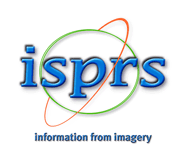Trasimeno Smart Land: 3D geospatial data integration for sustainable territorial management
Keywords: Smart Land, Digital Twin, Spatial Planning, Data Geoprocessing, Geospatial Data Management, Territorial Platform
Abstract. The Trasimeno Smart Land project presents an innovative application of Digital Twin technologies to support sustainable governance across a fragmented rural territory in central Italy, encompassing eight municipalities. The PITER Integrated Territorial Platform combines multi-source geospatial data, real-time sensor feeds, citizen-reported issues and extensive field survey datasets into a unified, dynamic platform, developed through a collaboration between local administrations, the Department of Civil and Environmental Engineering at the University of Perugia and private companies. Unlike traditional urban-focused Smart City models, PITER addresses the complexity of low-density areas characterized by dispersed settlements and extensive cultural and natural heritage, enabling advanced spatial analyses for infrastructure monitoring, public works management, land-use planning and environmental protection. The platform incorporates real-time data from IoT sensors, citizen reports, street-level surveys and continuously updated municipal records, structured across 24 thematic layers. Key functionalities include advanced spatial analyses, participatory governance tools and thematic dashboards supporting decision-making for land management, infrastructure monitoring and sustainable development. PITER’s architecture ensures high interoperability, data quality control and adaptability, offering a replicable model for similar fragmented contexts. The platform’s modular design allows for continuous updates and seamless scalability, providing a replicable model for other fragmented territories with complex administrative and infrastructural needs. By bridging technological innovation with administrative processes, Trasimeno Smart Land redefines territorial governance models beyond urban cores, contributing to a broader Smart Land paradigm.





